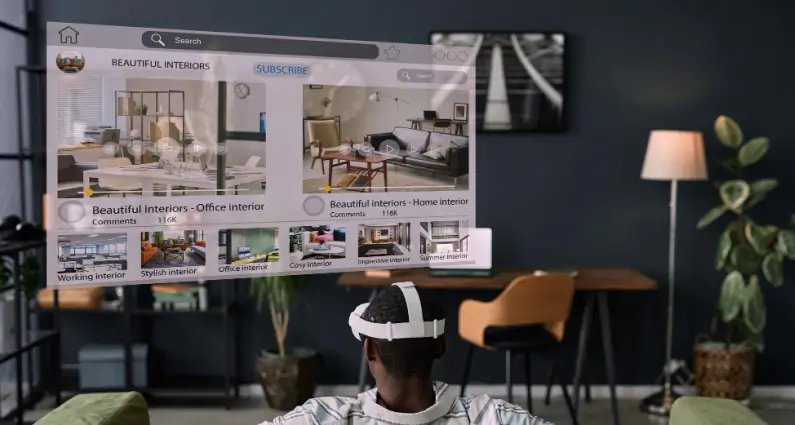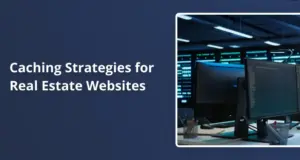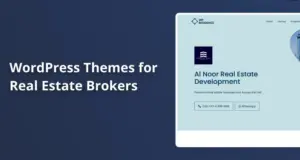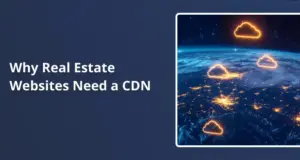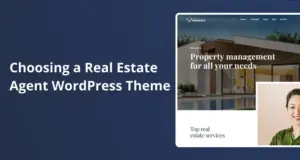House-hunting once relied on printed flyers, hours of driving between listings, and weekends spent at open houses. Today, a prospective buyer can tour a kitchen on a smartphone before the car even leaves the driveway.
Virtual tours power this acceleration—often built on WordPress—that lets real-estate professionals showcase properties with high-resolution imagery and interactive walk-throughs.
That said, even the most polished virtual tour can’t tell you how the morning light hits the bedroom or whether the neighbor’s dog barks nonstop. But used right, virtual tours don’t replace real-world visits—they make them more strategic. They filter out the noise, cut down on wasted time, and help serious buyers focus on homes that truly fit.
What Is a Virtual Tour?
A virtual tour is a collection of 360-degree pictures or videos that allow people to explore a home online. It’s as close as you can get to being inside a space without actually stepping foot through the front door.
- Each picture is like a bubble you can move around in. You can drag your mouse or tilt your phone to look side to side, up and down—just like standing in the room.
- Some tours feature special buttons, called hotspots, that allow you to click and navigate to another room, view the floor plan, or read about nearby schools.
- These tours can be easily added to a WordPress page with a simple line of code.
People started using virtual tours more in 2020 when many were staying at home and didn’t want large groups of people walking through their homes. Even after the rules changed, buyers continued to appreciate the convenience of being able to view homes safely and efficiently from their phones or computers.
Big websites like Zillow now add a “virtual tour” label to listings because people are more likely to click on them. It’s simple: when someone can explore a space on their terms, anytime, anywhere, engagement increases. And when engagement goes up, so do the chances of booking a showing.
Why WordPress Is a Good Home for Tours
WordPress is used to build over 40% of the world’s websites. It’s popular because it’s easy to use and works with many tools.
It’s versatile, intuitive, and supported by a massive community of developers, designers, and users. In real estate, that kind of flexibility is gold.
Take the Block Editor (also known as Gutenberg), for instance. You don’t need coding skills to embed a virtual tour. You upload it like you would a photo, position it where you want it, and you’re done. Do you like it full screen? Many fundamental estate-friendly themes let your tour stretch edge-to-edge, filling the viewer’s display and pulling them deeper into the experience.
But performance matters, too. Virtual tours are heavy. They include large images, detailed transitions, and dynamic navigation. That’s where WordPress shines again. Newer versions support lazy loading, which means only the images a visitor can see load. It’s faster, smarter and less taxing on mobile data.
Pair that with premium hosts like Cloudways or SiteGround, and you get features like object caching and HTTP/2—technical perks that keep sites loading quickly, even when a tour has 12 rooms and detailed floorplans.
Security’s built-in as well. SSL certificates are now standard with most WordPress-friendly hosts, providing buyers with the little padlock icon in their browser bar—subtle yet vital for establishing trust.
And when you layer in tools like Elementor or Gutenberg, it’s not just easy to build pages—it’s fast. Which, in a red-hot market, can mean getting a home listed and shown while competitors are still fumbling with photo uploads.
How Buyers Use Tours
First screen test
The buyer experience is changing—and not just in theory. The way people use virtual tours in real life reflects new habits and expectations.
Many people browse homes on their phones while waiting in line or sitting in their cars. A virtual tour allows them to check things like whether the kitchen overlooks the backyard, how tall the ceilings are, or if the pet door leads to grass or rocks.
Side-by-side checks
As interest grows, tours become a means of comparison. A couple might sit on the couch and flip between a two-story with a finished basement and a ranch-style home with an open concept. They’re weighing details, visualizing their lifestyle, and narrowing options—without leaving the house.
Measure and plan
Some tours let people measure the rooms. That way, kids can check if their bunk beds will fit before asking to visit the house.
The WPVR plugin indicates that people stay on pages longer when a tour is present. When visitors stay longer, the website appears more favorably to search engines like Google, which means the page may show up higher in search results.
Benefits for Sellers and Agents
In the past, open houses attracted everyone—from curious neighbors to those seeking ideas—not just serious buyers. A virtual tour helps sort people out. If someone doesn’t like how the bedrooms are set up, they can skip the house without visiting. That means fewer cars outside, less wear on the floor, and more time for the agent to talk to genuine buyers.
Virtual tours also help people who live far away see a house. People moving for a new job, parents buying for kids in college, or buyers from another country can all tour homes online without having to travel. Some buyers even make offers without ever visiting, just based on the tour.
Real estate agents use these tours to show they can offer more. Homeowners like this and may choose agents who include virtual tours. When agents use tools like Yoast or Rank Math to add virtual tour information to the website code, Google sometimes displays a “See Inside” link, which receives more clicks.
Key WordPress Plugins for Tours
- WPVR: This plugin allows you to add a tour block or a special code to display the tour. It works seamlessly with Gutenberg and Elementor, and the free version covers most of your needs.
- iPanorama 360: Ideal for homes with multiple rooms, this plugin enables you to add tooltips, a mini-map, and even background music.
- EmbedPress: This tool enables you to add tours from Matterport, Kuula, or Google Street View in a way that works seamlessly on both phones and computers.
Some plugins store the tours on your website, while others use cloud services to load only the part the person is looking at. Be sure to check how much storage and traffic you get before making a choice.
The Right Theme Makes All the Difference
Virtual tours look better when they have room to spread out. Design matters—especially when visuals take center stage. The theme you choose should let the tour breathe. That means full-width layouts, no crammed sidebars, and a header that doesn’t hijack the top half of the screen. A clean theme with simple code helps the page load faster, which is essential when displaying large images.
Responsive design is essential. People are touring homes on their phones, tablets, laptops, and even TVs. If your theme doesn’t scale beautifully, it kills the vibe.
And keep the code light. The faster your page loads, the better the experience. That’s not just UX talk—it affects bounce rates, rankings, and buyer trust.
Keeping Pages Fast
Large images and videos can slow down a site, but there are ways to keep it running smoothly.
WordPress now uses lazy loading to wait until you scroll before showing pictures that are lower on the page. However, some page builders turn off this feature, so ensure it remains enabled. When using iframe codes (such as for Matterport), add fetchpriority=”low” so that pictures farther down don’t load immediately.
Using a CDN like Cloudflare means your pictures come from a server close to the visitor, so everything loads faster. PageSpeed Insights shows that even a one-second improvement can help you retain more visitors to your site. A quick site feels better to use and builds trust.
Easy Wins for Tour-Focused SEO
Search engines like Google need text to understand your page.
- Use a clever title like “4-Bedroom Home in Austin + Virtual Tour,” so people see the tour is included.
- Write a short meta description that tells how many bedrooms there are, how big the yard is, and that visitors can look around the home online.
- With tools like Yoast or Rank Math, you can add a special code (called a schema) to inform Google that you have a virtual tour.
- Ensure that the custom post type you use for your tours is included in the XML sitemap, allowing search engines to find it.
- You can also add an FAQ section that explains how to use the tour, save the listing, or book a visit.
These often show up in search results and can help more people find your listing.
Still, Need the In-Person Visit
Virtual tours are a game-changer, but they can’t do everything. They don’t show street noise, odd smells, or that weird dip in the hallway floor. You don’t get the feel of sunlight through the blinds at 4 p.m. or the way the backyard sounds when the wind picks up.
That’s where in-person visits come in. They round out the picture, give buyers a chance to ask, explore, and poke around—and for sellers, they offer valuable feedback.
Virtual tours don’t tell you everything about the neighborhood. Visit the area during rush hour and again at night to see what it’s really like. Say hello to a neighbor—they might tell you about local events or share their impressions of the area’s safety.
Real-life visits show things you can’t see on a screen. A street might feel great during the day but seem different after dark. Walking around is the only way to know for sure.
Mixing Screen Time and Street Time
The best way to sell or buy a home is to use both tours and real visits. The magic happens when you use virtual tools and in-person touchpoints. A listing might go live midweek, with the tour link building buzz. By Saturday, you’ve got booked visits from qualified, interested buyers.
For people far away or remote clients, the agent can set up a quick video call. They receive the tour, a live Zoom walkthrough, and, if needed, a trusted local conducts a final walkthrough on their behalf. It’s faster, cleaner, and it works.
This saves time and makes the home-buying process easier.
Future Features to Watch
Virtual tours aren’t done evolving. Tools like WebXR are starting to bring video-game-style navigation into web browsers. Smart cameras are learning to identify surfaces and materials—telling buyers, for instance, that the floors are made of real oak or that the counters are Carrara marble.
Soon, someone could be walking through a tour and clicking on furniture to buy it—right there, thanks to WooCommerce integrations.
It won’t just be luxury homes offering this, either. Mid-range and even budget listings will adopt high-tech, immersive tools. Soon, even smaller homes might have high-tech, 3D tours.
WordPress makes it easy for agents to show homes with big, beautiful pictures and fast-loading pages. Virtual tours enable people to view homes from anywhere and save time. But walking through the house still matters. The best results come when agents use both—show the home online first, then let serious buyers visit in person.

